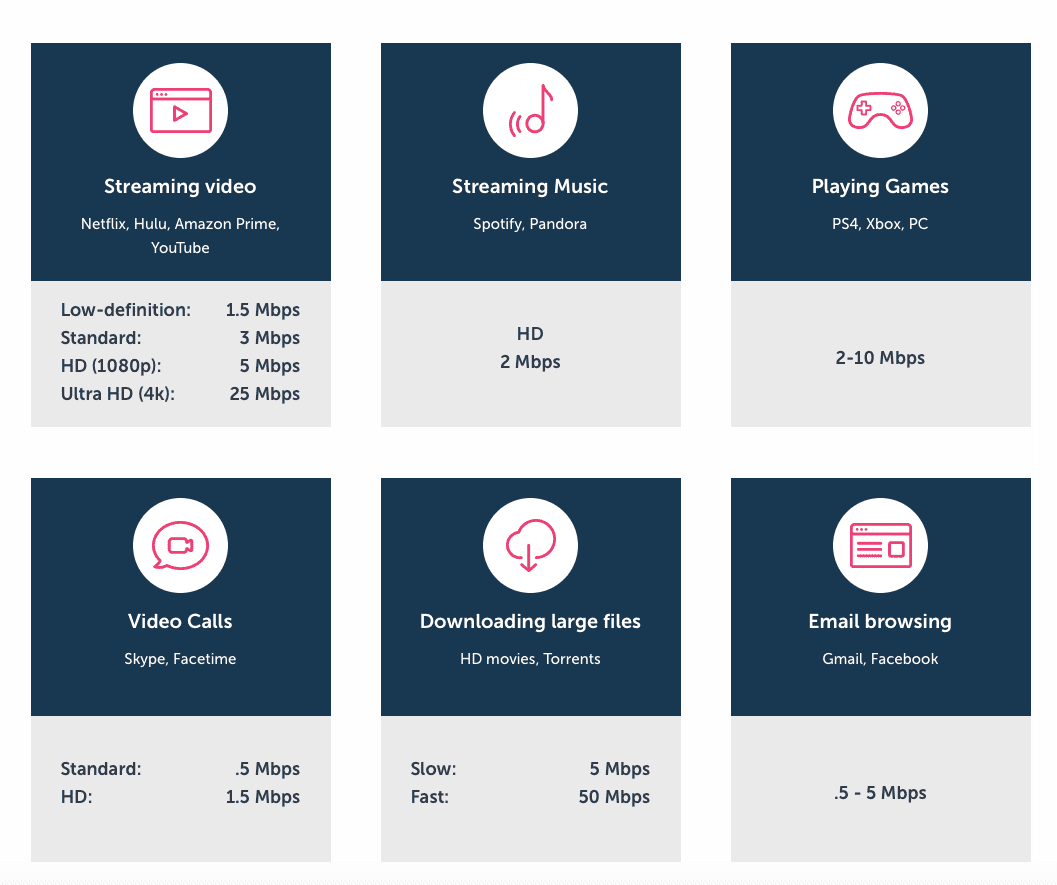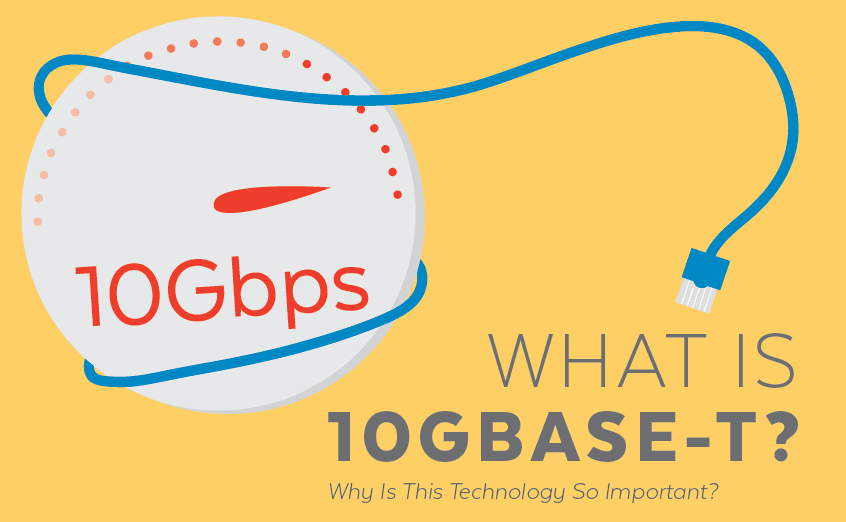10GBASE-T is a type of Ethernet signaling providing speeds over twisted-pair cabling that go beyond 1 Gigabit per second (Gbps) for distances up to 100 meters.
This IEEE 802.3an® standard can reach 2.5 and 5 Gbps over Cat5e and Cat6 cabling. Depending upon the network infrastructure, signals can potentially reach new speeds of up to 10 Gbps. The recent ratification and standardization of 10GBASE-T is the result of focused efforts from the NBASE-T Alliance.
 Who are the NBASE-T Alliance℠?
Who are the NBASE-T Alliance℠?
The NBASE-T Alliance is a group of experts. They come from companies across the industry with the expressed purpose of facilitating 2.5G and 5GBASE-T Ethernet product development and deployment.
Founded in 2014, the alliance builds consensus and helps streamline the development of new standards. The original standard, IEEE 802.3bz, was approved in record time in September 2016, is compatible with specifications published by the NBASE-T Alliance.
10GBase-T is a refresh and further development of these capabilities.
In a nutshell, the goal for 10GBase-T is to allow companies to develop and deploy 2.5G and 5GBASE-T products faster.
The alliance now focuses on publishing optimizations to the specification, facilitating interoperability and educating the market about the multiple applications of the technology.
Customers need faster wireless and content transfer speeds. Speed is essential to client enterprise, industrial, home and service provider environments.
Why is this 10GBase-T refresh such a big deal?
For the data center, this new capability will help make 10G on the desktop a reality in the not so distant future. Increase bandwidth opens the door for developers to grow essential applications.
File compression, additional memory, and network cards will eventually become unnecessary.
What technologies are hogging all of this bandwidth anyway?
Because online content is a key component of the online environment, it is driving bandwidth consumption. And the biggest pull comes in the form of video.
The speed of software halves, or out-bloats the capacity of hardware, every 18 months.
Moore’s law also known as Gates law
People want to watch movies. They want to watch sports and tutorials. They like to play games that are becoming more and more life-like. None of this is new to the Versa reader. Though written information definitely has its place in the education ecosystem, more consumers are turning to video to learn about products and services.
Some ways video is being delivered to end users:
1. Virtual Reality / Augmented Reality video streaming (VR/AR)

There is a very high probability that unprecedented levels of data will have to move across the network and in some cases be cached locally to ensure low latency. Immersive experiences with 360° video applications require a lot of data. Networks will need more storage at their data hubs.
[….] if you want the best “retinal” 360° video experience (as you get watching a 4k TV), as much as 600Mbit/s is required.
Last mile networks will need intelligent traffic management solutions, compression algorithms, and very low-latency, high-throughput capabilities to handle the demands of VR content.
2. Gaming
Current speeds are approximately 10Mbps. Since gaming is steadily moving toward the VR/AR niche, the data requirements will most likely move in tandem.
3. Teleconferencing
Video streaming services include a storage buffer of approximately 1/10th GB to help with latency issues. Depending on the number of participants and the screen resolution you require, you can expect to add 0.5 Mbps inbound and 0.8 Mbps outbound per participant.
Some services recommend having up to 50% headroom per communication channel to ensure maximum performance.

Other speed guzzlers
Other data consumption comes from Cloud-based platforms and data storage.
To deliver all of this throughput on demand, larger networks absolutely need to reach speeds of 1Gbps to 2.5 and 5 Gbps, especially at the enterprise level where many users are consuming data intermittently, making peak times difficult to anticipate.
For this advancement to be effective, the 10GBASE-T Alliance forum has unified efforts in the specification and product development process. Consensus, something we are seeing in other areas like cryptocurrency and blockchain, can bring about interoperability across the industry.
Broad adoption of solutions is actually helping all stakeholders save time and serve the public better by providing simplicity and ease of use.
With 10GBASE-T technologies, NIC cards will be able to auto-negotiate between the various Ethernet speeds.
That’s an extraordinary benefit. Some even predict NIC lifecycles with 10GBASE-T will be longer than fiber lifecycles. Hardware changes will become unnecessary when migrating between speeds.
The ISO cabling standard for 10GBASE-T moves to Cat7.
The only published cable standard supporting 10GBASE-T for a full 100m is the ISO standard for Category 7/class F in 11801 (which was published at the same time as the Category 6 standard).
Crosstalk elimination could also make Cat6A systems a viable alternative to Cat7. I believe this solution is in the works.
Going Forward
10GBASE-T is still in its early stages. Other advancements, no doubt, have yet to be developed. But if Morse’s law holds true, software will lead the charge, and hardware developers will continue their scramble to provide better and better IT networking devices to support it.

